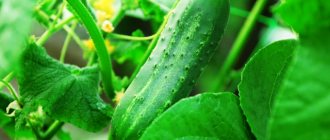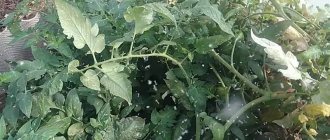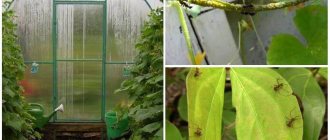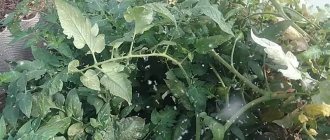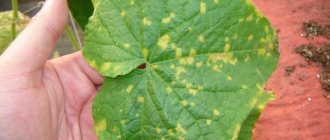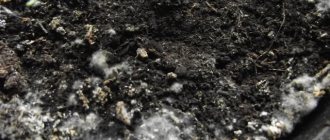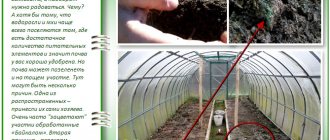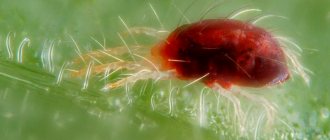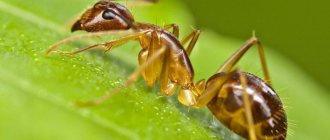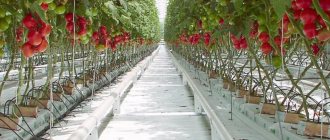All types of greenhouse aphids are sucking pests. They feed on plant juices and pose a danger to cultivated plants. The reproduction of insects in a greenhouse is facilitated by the presence of a nutrient medium and comfortable climatic conditions - warm air and high humidity. In order not to lose part of the harvest, you should periodically inspect greenhouse plants and, when the first signs of aphids appear, take measures to destroy them.
A humid and warm microclimate promotes active reproduction of the pest.
Why are aphids dangerous?
Any type of aphid is dangerous due to its aggressive feeding method.
These pests can become a real disaster for greenhouses and a headache for both the gardener and florist. When it invades, young as well as mature plants die very quickly. Countless numbers of insidious individuals damage the leaves, providing access to bacteria that cause rot. They draw out from the tissues all the forces of the plant, giving it growth and nutrition. As a result, the flower crop slowly dies.
Parasites spread especially quickly in a closed greenhouse space, reproducing in an incomplete cycle: first, females appear, laying larvae on the leaves. These larvae grow quickly and give birth to new females. One champion female can produce up to 150 larvae.
Signs and Symptoms of Plant Infestation
On young shoots, leaves, and buds, clusters of small insects of green, black, brown, and reddish colors are visible to the naked eye. The pest can settle on the roots. Aphids rarely damage berries and fruits.
The pest sucks juices from the tops of young shoots, leaves, buds and the plants weaken and stop growing. The shoots become bent, the leaves curl, turn yellow and fall off prematurely.
The affected parts become covered with a sticky, sweet secretion called honeydew. When there is a large number of pests, a sooty fungus appears on the upper side of the leaves.
Aphids reduce the winter hardiness of plants and produce fewer fruit buds. The amount of sugars and nutrients in the harvested crop is reduced. Due to contamination with aphid secretions, the marketability of vegetables and fruits decreases. With mass spread, perennial crops die within a few seasons.
Manifestation
Aphids in a greenhouse are almost invisible to the eye. First, aphids settle on the lower part of the leaves, and only then on the buds and young shoots. It sucks the vital juices out of them, as a result of which the leaves curl, the shoots grow poorly, the flower stalks become bent, and the buds dry out without ever blooming. In bulbous perennials, in addition to the ground part, the bulb itself is also damaged.
At the same time, the pests secrete sugary excrement, “honeydew,” which freely spreads throughout the plant, attracting ants, wasps, flies and bees. Sedentary aphids are in symbiosis with ants, supplying them with food, and the ants protect it and move it to a new place (this applies to wingless individuals).
IMPORTANT! The hidden danger is that various phytopathogenic viruses are transmitted along with aphids. If the first moment of the appearance of pests is missed, then your greenhouse will soon have a completely depressing appearance. Colonies of parasites can ruin all greenhouse plants.
Biological control
To get rid of aphids, some biological methods show good results. In open ground, in our climate, aphids do not have many natural enemies. The main ones include ladybugs, lacewings, and wasps.
Fungal diseases can also help provide a degree of control over pest populations.
It is quite difficult to breed and keep a ladybug within your garden on open ground. But inside the greenhouse this is much easier to do. Therefore, if it is possible to buy larvae of this species and release them in a greenhouse, it is better to do so. Other means of control may no longer be relevant.
Parasitoids are organisms that parasitize the body of their host and then kill him. A good example for aphids is the wasp A. colemani, which attacks peach and melon aphids.
"Greenhouse" species of aphids
Insects of all types of aphids, pests in the temperate climate of our country, are predominantly small (no more than 1-1.5 mm long), soft-bodied, pear-shaped insects with long legs and antennae. A characteristic feature of aphids are the so-called siphuncles - tubular formations that can be seen in the back of the abdomen.
Some of the most common species found in greenhouses include peach, melon, potato and foxglove aphids. In some cases, currant-lettuce and currant aphids can be found here, but given the absence of perennial shrubs in the greenhouses, in the bark of which the eggs of this species overwinter, they appear here relatively rarely.
Correct identification of the pest species is important in order to choose the most effective option for managing the insect population, however, at the domestic level, such data, as a rule, turns out to be superfluous - all insecticidal and biological agents work almost the same against any type of aphid. It is worth additionally noting that individuals of this type of insect can differ in color from each other, even when located on the same plant. Therefore, this indicator should not be relied upon to identify species.
How to deal with aphids in a greenhouse - the basics
Before planting, you first need to check the incoming planting material and sludge for signs of aphids. If there are no perennial plants growing in the greenhouse, and the entrances are closed with a dense mesh, then there is nowhere to get aphids here except by drift.
In addition, aphid damage can occur when a lot of last year's weeds remain in the greenhouse. Therefore, you need to ensure that the entire greenhouse area is properly prepared for winter.
From the external environment, aphids can be carried on outer clothing, so you need to pay attention to small green flies with wings. The use of excess soil fertilization with urea not only promotes lush plant growth, but is also beneficial for the development of aphids, since nitrogen is the main source of energy for this type of insect.
Greenhouse
In greenhouse conditions, several different forms of greenhouse aphids can exist simultaneously. Otherwise it is called green peach, because this particular crop is its primary host. But there is no need to have any illusions - the greenhouse aphid is omnivorous, like most of its relatives. Cucumbers, tomatoes, fresh salads or greens will be used.
In a greenhouse, a colony of aphids reproduces up to 14 times a year. The maximum size is 2.5 mm. They come with and without wings, green, black and black-green. If the damage has reached 25% of the leaves, then obtaining cucumbers, peppers or tomatoes is a big question. Develops from +10°C.
Nutrition and harm
Aphids feed by piercing the phloem of a plant with their elongated proboscis, which they use to suck the sap from the plant. When aphid populations reach large sizes, the plant may become weak and significantly slow down its growth. In addition, noticeable damage to the leaves is observed, which looks like curling.
As they feed, aphids release a very sweet substance known as honeydew into the environment. Accumulating on the lower leaves of the plant, honeydew promotes the growth of mold fungi, which looks like a black, sooty coating, which in turn reduces the quality of photosynthesis.
As they molt, the whitish shed exoskeletons of the aphids can be found on the ground near the root of the plant, which may indicate long-standing and severe damage to the plant. Often these remains can be mistakenly confused with another pest - whitefly.
Among other things, in a large community of aphids there are always ants that feed on sweet honeydew.
Timely detection of aphids is the best control method when processing a greenhouse
Regular, at least weekly, inspection of plants is necessary to detect aphids before their populations reach large sizes.
Particular attention should be paid to random weeds that are always forgotten about. Check for the presence of whitish shed chitinous covers and honeydew. Green peach aphids tend to be distributed more evenly throughout the crop, while melon aphids are more likely to be found in isolated “hot spots.” In addition, melon aphids are much less likely to form winged individuals, which more often linger on the lower surfaces of leaves and along the stem of the plant.
The foxglove aphid injects toxic saliva into leaf tissues, which leads to distortion of their shape, as well as their loss. In addition, this species is less heat-loving than others, so its attacks will continue even after the temperature drops.
Detection
Take a close look at your plants, every single one of them. If numerous colonies of point pests and sticky liquid (honeydew) are visible on the back of the leaves, buds, or shoots, and the old skin of the insects remains in white pieces, then this is a real aphid infestation.
But don't despair! When pests appear in the greenhouse, immediately start a war with them - use folk remedies, such as mechanical, environmental (biological) and chemical.
Description of the pest
Aphids are small insects, no more than a few millimeters long. the body is round, oval, teardrop-shaped. The covers are soft. All pests have a proboscis, which is adapted for piercing the outer shells of the plant. Aphids are phytophagous; they feed on plants, or rather cell sap, which is rich in carbohydrates and amino acids.
There are winged and wingless forms.
Why do aphids appear in greenhouses?
The combination of high air temperature and high humidity is beneficial not only for the development and growth of plants in the greenhouse, aphids also prefer these conditions. Promote the reproduction of aphids in greenhouses and greenhouses:
- crowded, thickened plantings;
- lack of ventilation.
Aphids can get onto greenhouse plants in several ways:
- overwinter in buds or soil;
- winged individuals can fly in during ventilation;
- insects or their eggs can be in the soil, manure, humus, which is used to fertilize the soil in the greenhouse.
Features of the existence of aphids in a greenhouse
In a greenhouse, aphids are able to reproduce quickly, producing up to 20 new generations per season. Some species of aphids that parasitize greenhouses bypass sexual reproduction. Females, without the participation of males, produce new larvae, which immediately after their appearance begin to harm plants.
Damage caused
Aphids in a greenhouse not only deprive the plant of vitality, drawing juices out of it. Pests in the greenhouse:
- spread viral and fungal diseases;
- aphids secrete a sugary liquid, honeydew, which attracts ants. The ants begin to “cultivate” the aphids, transferring wingless individuals to neighboring plants.
Attention! Honeydew is an excellent breeding ground for the development of sooty fungus, which contributes to the rapid death of the plant.
Fighting methods
The fight against aphids in a greenhouse can be carried out in various ways:
- mechanical;
- biological;
- chemical;
- using folk remedies.
Mechanical impact
This method involves collecting insects by hand. For this purpose, buds and leaves damaged by the pest are torn off and burned. This process requires some time, patience and effort, since fighting aphids in a greenhouse using this method is very tedious and not always effective. After all, it’s very easy to miss a leaf on which a whole family of pests lives. Therefore, it is used only for minor contamination of plants in a greenhouse.
Biological method
Another method that is used in the fight against aphids. It is enough to bring a ladybug into the greenhouse, which is capable of destroying more than one hundred aphids in a day.
On a note!
Very voracious and agile predatory gall midges will not refuse to feast on aphids. They live in peat fillers, which can be bought at any specialty store.
Chemical method
Chemical methods for killing aphids
To get rid of greenhouse pests, you can also use pesticides. They are used if the extent of the damage exceeds a quarter of all plants. The following chemicals are in great demand among gardeners:
- Fitoverm;
- Spark;
- Tanrek;
- Aktara;
- Inta-Vir;
- Aktofit;
- Shar Pei;
- Decis;
- Karbofos;
- Kinmiks.
Moreover, each product has an effect on a specific type of aphid. Therefore, before purchasing a pesticide, it is advisable to find out what pest the seedlings are affected by. In addition, some drugs can be used during the growing season, others no later than a month before fruit formation.
Chemicals have a negative effect not only on harmful insects, but also on the soil, accumulating in it. After that, they are absorbed along with water by vegetables, which the person then eats. Therefore, many gardeners try to get rid of aphids using folk remedies.
Whitefly
If the foliage becomes deformed, dries out, black spots form on it and buds fall off, it means that there is a whitefly in the greenhouse. In this case, processing of the polycarbonate structure can be carried out in the following ways.
What and how to process
- Mospilan . One-time spraying of the structure. For 1 liter of water you will need 0.5 ml of the drug.
- Verticellin . The shelter needs to be washed twice a day. You need to pour 25 ml of the drug into a liter of liquid.
- Aktellik . Multiple processing will be required. For 1 liter of liquid you will need 1 ampoule of the substance. Effectively fights whitefly larvae.
Spider mite
The most striking signs of insect damage to a plant include: the formation of dry, brown areas on the foliage and stem, and the formation of a thin web. If you do not fight the mite, the growing season of the crop will end prematurely. Greenhouse treatment measures.
What and how to process
- Fitoverm , Neoron , Vermitek , Akarin . Disinfection of the shelter frame must be carried out many times, and the preparations must be changed, because spider mites are able to adapt to a specific product.
- Colloidal sulfur . Add 80 g of substance to a 10-liter container. The treatment must be repeated, maintaining an interval of 14 days.
- Bitoxibacellin . 100 g should be diluted in water (10 l). Disinfection should be carried out every 2 weeks.
- Sulfur-tar soap . You need to rub a little soap and dilute it in the liquid. The solution should be wiped over the walls of the structure and sprayed on the seedlings.
The danger of these pests is not only that they suck the juices out of the seedlings, but also that they can infect the crop with some kind of infection. Fighting methods:
What and how to process
- Aktofit , Bitoxibacellin . These are low-toxic products, so after spraying, the fruits can be used after 3 days. Details about the use of the drug should be found in the annotation attached to it.
- For preventive purposes, autumn disinfection can be carried out with Metafos or Karbofos .
- Kinmiks , Inta-vir , Decis . These are highly toxic products, so harvesting in the fall is possible only 20 days after disinfection.
Ants
These parasites need to be combated both in spring and autumn.
What and how to process
An effective way would be to fumigate the greenhouse in the fall with garlic, wormwood, bay leaf or mint. Pests cannot tolerate these odors.
- Thunder-2, Ant, Anteater. It is possible to disinfect a greenhouse in the fall with these means after reading the instructions for their use.
Folk recipes
Folk remedies for aphids in a greenhouse are completely harmless. They have no side effects, decompose much faster and, with minor damage, are no less effective than pesticides. Most often used:
- ammonia;
- soda;
- milk and iodine;
- Coca Cola;
- vinegar;
- mustard;
- vodka;
- Green soap;
- Birch tar;
- tobacco;
- boric acid.
Traditional recipes for pests
Garlic
One of the effective ways to combat aphids is garlic infusion. To prepare it:
- 0.5 kg of garlic is crushed to a mushy consistency, which is mixed with 3 liters of water;
- the mixture is infused for 5 days;
- after which it is filtered and used to spray infected plants at the rate of 60 g of concentrated infusion per 10 liters of water.
You can prepare the infusion in another way. Take equal quantities of chopped garlic and water, place in a hermetically sealed container and leave for 10 days in a warm place. Then strain and use to irrigate plants damaged by aphids in the proportion of 25 ml of concentrate per bucket of water.
Celandine
No less effective against greenhouse aphids is an infusion of celandine. The composition of 300 g of dry leaves and 10 liters of water is kept for 2 days, filtered and used for irrigation.
Wormwood, calendula, chamomile or nettle have similar properties.
Soap-wood solution
A soap-wood infusion helps quickly get rid of aphids. On a bucket of water you need a piece of laundry soap (grate on a coarse grater) and 2 tbsp. l. ash. All ingredients are mixed to form a homogeneous solution, after which it is used for its intended purpose.
Herbal infusions
The use of herbal infusions gives good results against greenhouse pests. To prepare them, use onion peels, hot peppers, potato or tomato tops.
On a note!
The only important condition that should be observed when using folk remedies is regular spraying. A one-time treatment will not give the desired result.
Periodic inspection of the beds will help prevent the spread of aphids in the greenhouse. It would be a good idea to remove plant debris (tops, roots, fallen leaves) and weeds.
Ecological way
Biological (or ecological) methods of aphid control include the use of plants and insects that can destroy and repel pests.
The ladybug is the most famous aphid exterminator. This cute-looking bug eats more than a hundred parasitic insects per day. It is very beneficial that ladybugs reproduce quite quickly (an individual lays up to 400 eggs). The eggs hatch into larvae, which in turn also feed on aphids.
The lacewing is not inferior in hunting aphids . This small insect is brown or greenish in color and has thin transparent wings. Lacewing larvae are very active all the time after sunset.
The larvae of the hoverfly are also lovers of aphids. Flies try to lay eggs closer to pest colonies. The hatched larvae, with an excellent appetite, eat all aphids found nearby. For hover flies, you should leave sweet clover, weedy umbrella plants and a few dill bushes around the greenhouse.
Excellent ethnophages are predatory gall midges, which are particularly sensitive to the location where aphids accumulate, are mobile and are always hungry.
Chemicals to control aphids
Chemistry, as we know, is harmful; it should be used when there is no other choice. However, by the way, we can say that the use of chemicals is still the most effective method: it kills insects and acts so effectively that they may no longer appear on your site until the end of the summer period. But do not forget that insecticides, which is what drugs used to control harmful insects are called, can also be dangerous for beneficial insects.
In order to at least somehow understand the harmfulness of insecticides, we will briefly talk about their danger classes, since the packaging often does not indicate anything other than this number. So, all insecticides are divided into contact, that is, they begin to act only by direct contact with the victim, intestinal - when the victim swallows poisoned juice or food, and systemic, that is, complex.
It is clear that systemic insecticides are the most effective, they kill insects and also stay on plants for up to four weeks, which, by the way, must be taken into account when harvesting. A negative factor of a systemic insecticide is the fact that it can, along with pests, poison both humans and the water in the pond and beneficial insects such as bees.
To prevent this from happening, we recommend using biological drugs. They are less effective, but they are also as safe as possible, because they are obtained from plant components that have an inhibitory or exterminating effect on pests.
The disadvantage of any biological preparation is that it is easily washed off by rain or irrigation water, and insects do not die immediately under its influence; they can feed on plants for another week, continuing to cause damage to them, as before. Vegetables, fruits and other edible parts of the plant can be safely consumed just a couple of days after treatment with these drugs, however, it is better to wash vegetables and fruits with warm water before giving them to children.
Biological drugs approved for use are supplemented and changed annually. It can be found in the relevant catalogs and reference books. Currently, the following drugs are considered approved for use against aphids: Akarin, Actofit, Fitoverm and Biotlin.
The recommendations, along with the characteristics, provide norms and methods of application, spraying periods.
Aphids on the shoot of a plant.
When working with chemical insecticides, it is necessary to wear protective clothing, gloves, goggles and a respirator. They should be used only as recommended. Increasing the dose and shortening the waiting period until the next treatment will not provide the expected positive effect. Knowing their negative impact on health, in small gardens and berry fields it is better to use biological preparations.
Wintering place for aphids
To combat a pest, you first need to decide where it spends the winter. Aphids endure winter in the fertilized egg phase, most often near leaf buds on bushes, trees, and in the root zone. Since ants and aphids have symbiosis, the insect can survive the winter in an anthill. If the eggs are on the bark or near the buds, they can be easily noticed when inspecting the trees.
The eggs are arranged in groups. They will look like black, shiny, fine-grained growths on the bark. If branches infected with aphids are found, they must be cut off and burned outside the site; if cutting the branch is not possible, it must be mechanically cleaned of parasite eggs and whitened with a solution of slaked lime.
Ants “domesticated” this parasite for their needs. While feeding on plant sap, aphids secrete honeydew, which is a delicacy for ants. Therefore, the ants take care of it, transfer it to different plants so that the aphids have more nutritional material.
Preventive measures
A greenhouse is a closed ecosystem and it is much easier to prevent a pest from appearing in it than to later fight aphids. Considering that in a confined space there is nowhere for it to come from, it becomes clear that it is brought in from the outside - during ventilation, opening doors, with new soil, seedlings or on your clothes.
It is difficult to block such a path of penetration, but it is still possible to resist infection. To do this in the greenhouse you must regularly:
- inspect the beds of cucumbers, tomatoes and peppers for the presence of aphids;
- remove plant debris: dead leaves, tops, roots;
- pay attention to weed control - they try to get rid of them as much as possible.
The set of measures includes treating the greenhouse using fumigation. A variety of checkers give good results: from tobacco to sulfur. You can buy it with insecticides in it. The smoke disinfects the soil and structural elements of the greenhouse and does not give any pest a chance. This control measure will be effective when used at the end and beginning of the season, as well as during the growing season.
Caustic soda or lime, when diluted in water, will help disinfect the contents of the greenhouse or equipment. Dilute in a proportion of 0.4-0.5 kg per 10 liters.
In cold regions, it is recommended to freeze greenhouses to combat aphids when critical temperatures occur in winter. To do this, they are simply left open for several days.
In addition, the list of recommendations for the prevention and control of aphids includes:
- Careful control of planting material. Purchased seedlings must be inspected for pests and undergo a quarantine period.
- Compliance with agricultural technology, namely planting dates, growing season, lighting regime, watering, fertilizing. Weak cucumbers or tomatoes that have suffered as a result of lack/excess of fertilizer or light will become easy prey for aphids. Moisten the soil only if necessary. In addition, never allow it to overflow when it gets cold.
- Control of temperature and air humidity. When growing the most popular cucumbers, tomatoes or peppers, the constant temperature should not go beyond the range of +18...+28°C, and the humidity should not be 75–90%.
- Prevent the appearance of ants and anthills. After detecting at least one, immediately inspect the entire greenhouse. Destroy them at the first threat.
There are interesting recommendations for maintaining paths in greenhouses. It is necessary to mulch them with a 5-7 cm layer of sawdust and lightly moisten them with a spray bottle. Bring in a few earwigs, then a strict aphid controller will simply settle in the greenhouse.
Growing early vegetables in a greenhouse is not the easiest job. Compared to open ground, tomatoes and cucumbers are still safer here. You just need to not miss the moment and take timely measures to combat aphids, or even better, prevent their appearance.
Autumn disinfection of a greenhouse from fungal diseases
The most well-known diseases of crops grown under cover are due to fungal spores.
Late blight
This disease affects all nightshade crops - tomatoes, eggplants, peppers. If brown or black spots appear on the foliage of seedlings or their fruits, as well as areas of rot, it is necessary to begin combating this disease.
What and how to process
- Copper sulfate . It is necessary to dissolve enough powder in water so that the liquid acquires a rich blue color. After some time, it is advisable to re-disinfect, only the solution should be very weak, approximately 0.1%.
- Copper oxychloride . Once a week, spray the polycarbonate shelter with a solution of oxychloride (dilute 40 grams of the substance in a bucket of water). Disinfection should be stopped when there are 21 days left before harvest.
- Arilin , Fitosporin . Preparations based on Bacillus subtilis. How to dilute and how many times to carry out the procedure should be read in the instructions for the drug.
- Bordeaux liquid . 40 g of 1% product is diluted in a 10-liter container with water. The greenhouse must be treated once every 10 days. Stop spraying no later than 20 days before harvesting.
After harvesting, additional disinfection of the entire structure should be carried out.
Powdery mildew
This infection is characterized by the appearance of white spots on the leaves of seedlings. Their fusion leads to necrosis of culture tissues. At the last stage of the disease, the stems of the seedling are affected. Powdery mildew is a late-summer or autumn disease that affects plants during strong changes in climatic temperature and increased rainfall, which most often happens in the fall. In this case, polycarbonate shelters must be disinfected in summer and autumn using certain products.
What and how to process
- Fungicides : Topaz, Fundazim, Gamair, Fitosporin (here are instructions for its use), Bayleton, Tilt, Quadris. Any of these means must be used to disinfect the greenhouse. Information about the dosage, method and nuances of disinfection should be found in the annotation attached to the drug.
- Thiovit-Jet . An effective drug in the fight against powdery mildew. Details of use can be found in the instructions for use.
- Copper sulfate + laundry soap . So, grate 100 grams of soap, dilute it in 10 liters of warm water. In another similar container, mix water with 10 g of copper sulfate. Then you need to combine both solutions and process the structure. After a week, repeat the manipulations, and, if necessary, carry out a third disinfection, 8 days after the second.
Cladosporiosis
The peculiarity of this infection is its rapid spread. With cladosporiosis, brown spots can be observed on the leaves of the plant seedling, and after some time, the leaves fall off. In this case, the structure must be disinfected in the fall.
What and how to process
- Pseudobacterin-2/PS/J . For prevention purposes, 0.1 g of this drug must be diluted in 10 liters of water. The same treatment must be repeated 20 days after the initial one.
- Polisher . Take 30 grams of the product and dilute with water (10 l). An effective remedy in the fight against cladosporiosis.
- Hom . 32 g dissolves in water (10 l). Effectively kills infection.
- Fitosporin-M . Can be used as a preventive measure. The product (0.05%) is diluted with liquid, and the resulting composition is wiped over the shelter frame and polycarbonate. After 14 days, the treatment must be repeated.
Fusarium
This infection begins its spread from the root system of the seedling. The small roots become diseased first, then the large ones, and after them the stem. However, the leaves immediately change color from rich green to yellow. The foliage near the soil withers. The infection is most dangerous in the fall, when it gets very cold at night. Fusarium can be combated with proper autumn treatment of the greenhouse.
What and how to process
- Pseudobacterin-2 . For a large area, 0.1 g of the drug diluted in water is sufficient.
- Trichodermin . It will give a positive effect only if not only the shelter is disinfected, but also the soil in it.
- Benazol , Fundazol . Effective remedies. Use strictly in accordance with the instructions (sold together with the drugs).
It's better to prevent than to fight
Aphids are small green, black or yellowish insects. Settling on the underside of a cucumber leaf, it sucks out organic matter from it. It develops very quickly (up to 20 generations per season) and is capable of destroying the entire cucumber crop. Its mass dispersal must not be allowed, otherwise the struggle will be difficult. Its females and larvae remain in the greenhouse for the winter, so if preventive work is carried out in time, then it is possible that aphids will not appear in the greenhouse.
If you don’t fight aphids, they will very quickly infect all the crops in the greenhouse.
The following measures are effective:
- Fumigation of the greenhouse with sulfur smoke bombs at the rate of 50 g per square meter. m. It is recommended to do this in greenhouses with a wooden frame with good sealing. Sulfur dioxide has a destructive effect on metal.
- Disinfection of the greenhouse by treating the entire interior space and equipment with bleach, dissolving 400 g in 10 liters of water. When the solution has infused, drain the liquid and use it for spraying, and coat the shelves and other greenhouse structures with the sediment using a brush. Caustic soda is also suitable for this purpose - about 0.5 kg per bucket of water.
- Disinfection using a mixture of formalin (40%) and any insectoacaricidal drug.
- Increasing the ability of cucumbers to resist pests. Why keep an eye on the temperature - at night it should not be below 18 degrees C, and at night it should not rise above 28. The thermometer rises especially high in the hot summer in glazed greenhouses, so to optimize the temperature, whiten the south side with chalk. The humidity indicator is also important - at night from 85 to 90%, and during the day - from 75 to 80%, as well as compliance with planting dates, timely application of fertilizers, and ventilation.
- Destruction of ants, as the main carriers of aphids, feeding on their waste product - “milk”. If a colony of ants has entered the greenhouse, then you can use crayons that are used to kill cockroaches, Anti-Ant, or other chemicals.
- Planting plants that repel aphids, such as basil, along the edge of the garden bed.
How to get rid of aphids on currants?
Aphids love to settle in unopened currant buds. Pests inhibit the development of the plant by eating the core and tightly gluing unblown leaves together. Therefore, insect control can only be effective if aphids on currants are quickly detected.
Even better is to prevent its occurrence. This needs to be taken care of in the fall. It is necessary to collect and burn plant debris, and also dig up the ground around the bushes before frost.
If there are anthills, you need to treat them with a special product, then collect the remains and burn them. When ants settle in the ground, you can fight them with boiling water. This rather old method of fighting is considered safe and effective.
The first treatment of shrubs against aphids should be carried out immediately after the snow melts. Dormant buds should be scalded with boiling water. The main thing is to choose the right moment when the aphids begin to leave their winter shelters. It is important to remember that if you are late with processing, you can harm the plant.
Pathogens
There are several types of entomopathogenic microscopic fungi that have been specifically bred for use against greenhouse pests. The two commercially available species are Beauveria and Paecilomyces.
Beauveria bassiana is a soil fungus that can be found anywhere in the world. Fungal spores (conidia) infect the insect through the cuticle. Their shell contains enzymes that dissolve the cuticle of the insect, and then the spore penetrates the body. Once it enters the insect's body, the fungus produces a toxin that weakens the host's immune system. This fungus requires high relative humidity and moderate temperature, and 8 to 10 hours to be effective in insecticidal control.
It is worth noting that Beauveria cannot be compatible with ladybugs or other insects used in aphid control, as it will kill them too.
Paecilomyces fumosoroseus is a naturally occurring fungus found in infected dead insects and some soils. The fungus attacks the insect by penetrating the outer shell of the insect. Otherwise, the principle of the beneficial action of the fungus is the same as the previous description.
Prevention of occurrence
It's always nice to prevent problems rather than solve them.
Preventive measures against aphids will allow you to never encounter such a scourge.
Plants that repel aphids
If you are not afraid of competition, that cucumbers will not share space with other plants, then you can try the scaring method.
If a few years earlier the cucumber plantings were already subject to aphid attacks, it is worth planting repellent plantings around the plants.
Aphids are afraid of smell:
- garlic,
- Luke,
- celandine.
Be sure to plant these plants along the cucumber beds. This will reduce the likelihood of pests.
Strengthening the immunity of cultivated plants
It is necessary to strengthen the immunity of your plants.
Without proper procedures, plants will be very susceptible and aphids will quickly appear on them.
- You need to water the plants not with warm, but with slightly cool water.
- There is no need to cover the cucumbers, thereby saving them from rain and gusty winds.
- You should not grow cucumbers in greenhouse conditions. Even if the plant grows in a greenhouse, open the windows as often as possible and ventilate the room.
- Do not create too much humidity.
- Don't be afraid of direct sunlight. Yes, and they dry the upper part of the foliage, but aphids definitely won’t settle here.
- Of course, it is necessary to give preference to natural fertilizers.
The stronger the plant, the less likely it is that aphids will develop on it.
Fertilize the soil with ash, manure, mullein, urea, and humus. All these natural ingredients can always be found in the private sector.
Attracting biological enemies
The main enemy of aphids is the ladybug. This insect feeds on aphids, which means it is your ally.
How to attract a ladybug to your territory?
Ladybug is not indifferent to sweets. Therefore, gardeners selectively lubricate some cucumber leaves with sweet water or even soda.
Coca-Cola works great.
By soaking a few leaves in this drink, you will ensure the presence of ladybugs in your immediate vicinity around the clock. Why don't you need security?
Reproduction and aerial migration of aphids
Aphids lay eggs, and some species have viviparity. Most aphid species reproduce over several generations using parthenogenesis. A certain generation is born winged and of different sexes. In species that change hosts, this occurs before colonization of a new plant or when the colony grows too quickly and the resulting overcrowding. Winged individuals are able to travel long distances and create new colonies in new places.
Colony of aphids on cabbage.
According to new research, the birth of winged aphids may also be caused by special aromatic substances that aphids secrete when they are attacked by enemies, such as ladybugs. These warning substances cause great anxiety and increased movement in the colony. This creates an overpopulation effect, which causes rapid production of winged offspring.
The best way to treat diseases and pests without replacing the soil
Disinfection of a greenhouse should include treatment of the soil and the structure itself. If you do not plan to completely replace the soil in the greenhouse, at least take the trouble to remove its top layer (7 cm thick), in which the maximum number of pests accumulates. For disinfection, you can use biological preparations (Baikal, Trichodermin, Fitosporin, Alirin), steaming the soil and powerful chemicals.
Fumigation with sulfur bombs has a good disinfecting effect.
Steaming is considered the safest and most environmentally friendly method, although it requires some labor. You will have to boil water at the rate of 1-3 liters per square meter of soil. Immediately after this, the ground should be covered with film for 1-2 days. For maximum effectiveness, the treatment should be repeated several times in a row.
On a note! The only disadvantage of this method is that during steaming, earthworms are destroyed, which improve the structure of the soil and enrich it with humus.
Copper sulfate
Copper sulfate is one of the most popular means used to treat greenhouses. It acts as an antiseptic and pesticide. Vitriol is used to combat many diseases of garden crops. This drug is safe for the skin, but can cause burns to the mucous membrane, so it is necessary to work using personal protective equipment.
In order to prepare a disinfecting solution, you need to dilute 100 g of dry copper sulfate powder in 10 liters of warm water.
Experienced summer residents advise adding one tablespoon of white vinegar to the resulting solution; the effectiveness of this treatment will increase. The specified proportions are only suitable for surface treatment. The soil solution should be of a weaker concentration. It is prepared from 5 g of copper sulfate and warm water. The consumption of the working composition is 2 liters per square meter. meter.
On a note! Copper sulfate is most often used specifically for autumn treatment of greenhouses, since it is a toxic substance that can negatively affect plants. The drug copes with pathogens of scab, rust, late blight, powdery mildew, curl, spotting, and rot.
Iron sulfate
Iron sulfate can be called a radical remedy. The substance kills everything - both beneficial and harmful microorganisms. Most often they resort to it when, last season, the plants in the greenhouse were constantly sick and the crop died.
After using this drug, the soil becomes dead. To restore it, you need to treat it with biologically active agents, for example, use Baikal, which will give life to new colonies of beneficial soil bacteria.
To prepare the solution, 250 g of iron sulfate are diluted in 10 liters of water. The resulting composition should be sprayed on all greenhouse beds.
Bordeaux mixture
When bacterial and viral diseases appear in the greenhouse or in case of severe fungal infection, a Bordeaux mixture of 2 components is also used: copper sulfate and slaked lime. The product is very powerful, it acts on almost all pests and pathogenic bacteria and fungi. For the drug to work properly, it must be prepared in accordance with the instructions:
- Taking 100 g of copper sulfate powder, dilute it with 1 liter of hot water and stir until the crystals dissolve. Then the volume is adjusted to 5 liters by adding 4 liters of cold water.
- In a separate container, dilute 100 g of quicklime in 1 liter of water, wait for the reaction, after which 4 liters of water are also added.
- When both solutions reach room temperature, they are combined. To do this, use a wooden stick, which is used to stir the lime solution until a funnel is formed and a solution of copper sulfate is poured into it in small portions.
The shade of the resulting mixture should be light blue. The finished mixture is sprayed onto the frame of the greenhouse and the soil inside it. The prepared solution cannot be stored; it must be used immediately after preparation.
Bleach
The use of bleach is another effective way to get rid of pathogens and pests in a greenhouse. This treatment is effective against root-knot nematodes, black leg, white rot, clubroot. During autumn treatment, you can use a more concentrated solution of bleach than in spring.
The solution is prepared from 10 liters of water and 400 g of bleach powder. The resulting mixture should be poured generously onto all greenhouse beds. Over the winter, the substance will be completely neutralized.
From late blight
Plants of the Solanaceae family are especially susceptible to late blight. If tomatoes in a greenhouse suffered from this disease last season, it is necessary to carry out thorough treatment in order to protect the future harvest. It is necessary to use powerful disinfectants, otherwise the pathogen of late blight cannot be dealt with.
Bleach has proven itself to be effective. Its solution is poured onto the soil, and the resulting sediment is treated with the structural parts. Formalin is considered a powerful tool in the fight against late blight. First, you need to dig furrows in the beds, then pour the drug into them and dig in lightly. After this, the greenhouse is hermetically sealed for 3-5 days. After the specified time has passed, the greenhouse is ventilated.
Fumigation with sulfur bombs, the quantity of which is calculated based on the internal volume of the building, copes well with late blight. You need to take into account not only the length and width of the greenhouse, but also its height. One checker is designed for 5 cubic meters of space.
Treatment of a greenhouse in the fall from diseases and pests: video
Review of drugs
Bayer products performed well.
- A contact-type drug, the active substance is deltamethrin. Starts working within the first hour after treatment. Before use, the drug is diluted in water - approximately 1:10. 2 treatments are required with an interval of 7-10 days. The protective effect lasts up to 15 days if the product is not washed off. The fruits of the treated plant can be eaten only after 20-26 days.
- Contact-intestinal preparation against insects. It acts very quickly - most insects die in the 1st hour after treatment, the effect lasts up to 14 days. For 10 l. About 75 ml of water is required. drug. The need for repeated treatments is judged by the appearance of new insects on the plant. Due to its oily consistency, “Biskaya” is resistant to washing off. After treatment, you need to wait 7 days before consuming the plant.”Tanrek” - domestically produced, systemic type of action. For 10 l. Only 1-5 ml of water is required. facilities. The protective effect lasts 2-3 weeks. No re-processing required. You can eat plants and fruits only 10-20 days after spraying.
- Contact-intestinal action. To prepare 10 l. An aqueous solution requires only 2-4 ml of insecticide. Repeated treatments are carried out for repeated infections. The waiting period is 3-4 days.
Danadim
Low-toxic drug among chemical insecticides. Its effect appears within 48 hours after application. For treatment, prepare a solution, add approximately 25 ml of the drug to 10 liters of water, after which spraying is carried out. The effect lasts for 2-3 weeks, after which re-treatment is carried out.
If there are only a few aphids, less toxic chemicals will help get rid of them. For example, a Bordeaux mixture consisting of copper sulfate, quicklime and water. It is made at home by adding 10 liters. water 100 gr. each component, or purchase a ready-made one. After application, the effect lasts 10-14 days, then you can spray again, but no more than 4 times per season. Spraying against aphids should be done 2-4 weeks before harvest.
Copper sulfate is also used separately. For 10 l. You will need 100 grams of water. If necessary, the solution is “strengthened” with soap or a special insecticide “green soap” (300 g per 10 liters of water). Treat against aphids every 14 days, but 4 weeks before harvesting the fruits.
Packaging of Russian-made copper sulfate “Green Belt”.
How to assess the safety of an insecticide?
Each drug, both chemical and biological, is assigned a certain hazard class for humans (from 1 to 4) and for bees (from 1 to 3). The higher the number, the less toxic the insecticide and there are fewer restrictions on its use. Usually this information is indicated by the manufacturer on the label.
If there is no such information, then you should refer to the “Catalogue of Pesticides and Agrochemicals Permitted for Use on the Territory of the Russian Federation” - a publication published annually by the Russian Ministry of Agriculture.
The catalog can be downloaded from our website. It contains information about all plant protection products officially registered in Russia. There you can also find information about the manufacturer, application features, dosages, consumption rates and toxicity of each drug. This publication allows you to independently select the right remedy for a specific crop against a specific pest or disease.
You need to be wary of Russian drugs that are on the market but not included in the catalogue. They may not have been manufactured correctly and may be dangerous.

